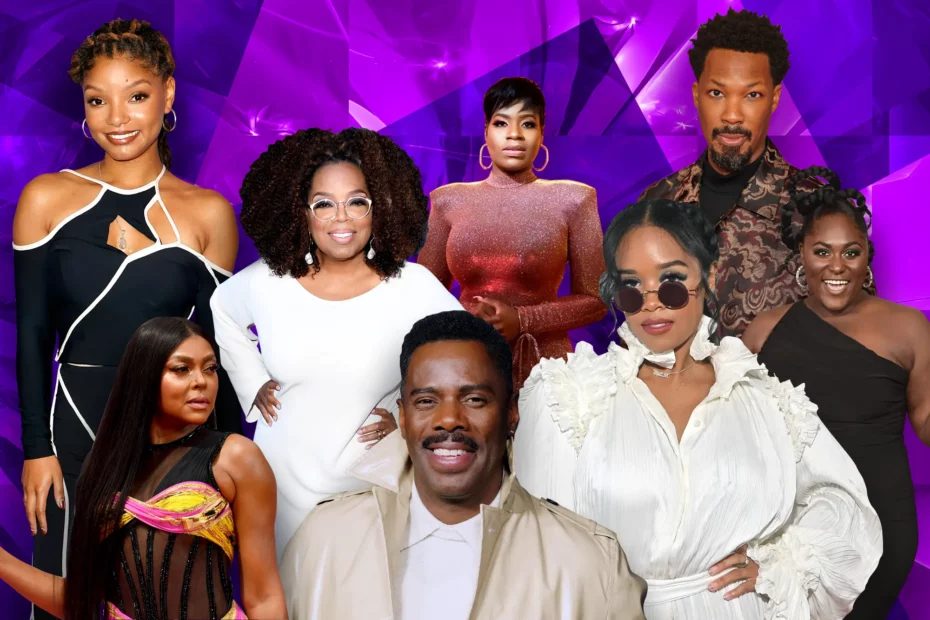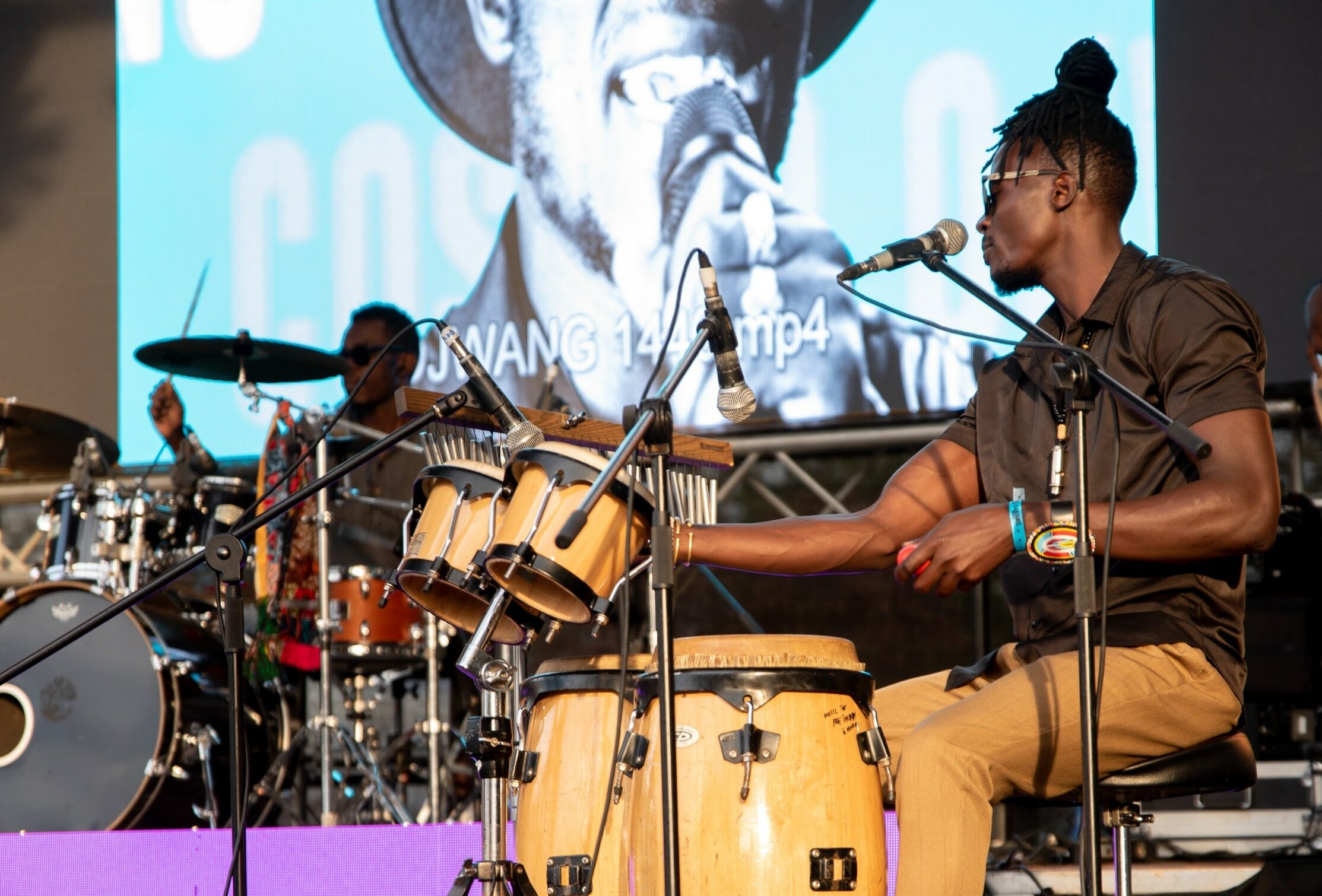“The Color Purple,” an energetic adaptation of the cherished novel-turned-beloved-film-turned-hit Broadway musical, emerged as a box office powerhouse on Christmas Day.
The movie has surpassed predictions, amassing $18 million from 3,152 theaters in North America. This marks the largest Christmas Day opening for a film since 2009 and the second-largest Christmas Day opening ever.
This substantial ticket revenue led the way on Monday, surpassing two other newcomers, Neon’s racing drama “Ferrari” and director George Clooney’s uplifting sports tale “The Boys in the Boat.” Impressively, Warner Bros. secured the top three spots on domestic charts, with “Aquaman and the Lost Kingdom” and “Wonka” claiming second and third place, respectively.
‘The Color Purple’ Shines Bright on Christmas Day
Amid a somewhat lackluster holiday season, “The Color Purple” appears to be the go-to choice for families. Fantasia Barrino, an “American Idol” winner, vividly portrays Celie, illustrating her challenges and victories as a Black woman in early 1900s Georgia. The film also features a stellar cast including Taraji P. Henson, Danielle Brooks, Colman Domingo, and Halle Bailey.
Meanwhile, “The Boys in the Boat,” recounting the true tale of the University of Washington’s rowing team at the 1936 Olympics, debuted with a decent $5.7 million from 2,557 theaters on its first day. Despite mixed critical reviews (earning 56% on Rotten Tomatoes), the movie earned an enthusiastic “A” CinemaScore, drawing mainly older female audiences, with 38% of ticket buyers above 55 and 54% women.
In contrast, Michael Mann’s sports biopic “Ferrari,” starring Adam Driver as Enzo Ferrari, struggled, bringing in $2.8 million from 2,325 venues on its opening day. With this pace, it’s doubtful the film will recoup its $95 million budget.
The Storyline of ‘The Color Purple’
Over the past four decades since Walker introduced The Color Purple, Celie’s narrative has undergone various interpretations. It has morphed across different mediums and under diverse creative guidance. This evolution has garnered both praise and scrutiny. Walker’s novel received critical acclaim, earning the Pulitzer Prize in 1983, a historic achievement. She became the first Black woman to win this prestigious award, along with the National Book Award for fiction that same year. However, the book’s success also sparked controversy, drawing criticism for its portrayal of Black families, particularly Black men. These concerns escalated significantly when the novel transitioned to the big screen under the direction of Steven Spielberg.
How the Movie Has Preserved the Book’s Essence
Adapting Alice Walker’s 1982 novel, “The Color Purple,” has posed a challenge in preserving the book’s impactful essence. The novel’s epistolary nature, effective in revealing hidden truths alongside shared insights, presents a hurdle when transitioning to visual mediums like theater and film. Although voice-over can aid in this transition, it has its limitations.
Yet, the greater challenge lies in capturing the raw and candid tone that Walker imbues in Celie Harris, the central character. Celie, a poor Black woman in turn-of-the-century Georgia, writes letters to God from her youth, recounting the harrowing trauma of repeated abuse by a man she believes to be her father. Her story continues with the heartbreaking loss of her children and her subsequent forced marriage to an abusive man who treats her as little more than a household servant.
The narrative arcs around Celie’s transformative journey towards self-realization and liberation—a recurring theme in Walker’s work. It embodies her perspective on the liberation of Black women, addressing both race and gender. Walker, in a conversation with The New York Times last year, clarified that her coined term “womanist” isn’t meant to oppose feminism but to expand it. She emphasized the importance for Black women to uphold the tradition of self-liberation, citing the example of Harriet Tubman, who liberated herself and then returned to free others.
Present and Previous Actors
Her description could easily apply to “The Color Purple,” a narrative that, akin to Celie, features characters traversing diverse phases of this very journey. Walker secured the Pulitzer Prize for her novel, marking her as the inaugural Black woman to claim this fiction honor. The initial big-screen adaptation emerged in 1985, featuring Whoopi Goldberg, Oprah Winfrey, and Danny Glover, directed by Steven Spielberg. However, it faced criticism for deviations that altered the essence of the tale. While Celie’s life retained its tragic elements, the film’s tone underwent a brightened, more Hollywood-esque transformation.
Fantasia Barrino’s Role in the ‘The Color Purple’ Movie
Back in 2007, Fantasia Barrino, known for winning the third season of “American Idol,” stepped into the role of Celie on Broadway, succeeding LaChanze. Now, she’s reprising that role for the latest screen adaptation of the show, following a lineage increasingly prevalent in cinema: It’s a film-musical originating from a musical adapted from a movie inspired by a book. (A similar path will be taken by the upcoming “Mean Girls” release next year.) Studios, often risk-averse, are consistently on the lookout for guaranteed successes, and what could be more promising than something with a proven track record of triumph?
Directed by Blitz Bazawule and boasting an extensive production team including Spielberg, Winfrey, Jones, and Broadway show producer Scott Sanders, this rendition stands primed for triumph. Alongside Barrino, the stellar cast features the remarkable Danielle Brooks reprising her Broadway revival role as Sofia. Also, alongside Colman Domingo, Corey Hawkins, Aunjanue Ellis-Taylor, singers H.E.R. and Ciara, and Taraji P. Henson, seemingly tailor-made for her portrayal of Shug Avery.
The Musical Inspiration of ‘The Color Purple’ Movie
This rendition of “The Color Purple” draws more from the musical’s inspiration than directly adapting it. Some songs from the original show have been omitted, while new ones have been introduced. Interestingly, the film also includes “Miss Celie’s Blues (Sister)” from the 1985 movie. Marcus Gardley’s screenplay, in certain sets, aligns closer to the original book. Particularly depicting the relationship between Shug and Celie. While not explicitly portrayed, their connection is undeniably intimate—a pivotal layer in Celie’s journey. In a narrative centred on an abused Black woman discovering her value among other women, Celie’s bond with Shug, illuminating the notions of pleasure and safety, stands as a crucial element in her personal growth.
For the initial two hours, it’s captivating: grand musical scenes, emotional performances, and a strong sense of respect for the story’s history make it engaging. I wished the editing allowed more time to appreciate the dancers, but overall, I was hooked.
However, as it concludes, it’s evident that the story continues to pose challenges for would-be adaptors. This rendition faces a similar challenge to Spielberg’s version: truly capturing Celie’s journey necessitates addressing unspeakable hardships that contribute depth to her transformation into a determined and courageous woman. In a standard movie duration, characters often risk being oversimplified, and while this adaptation grants the male characters a touch more humanity compared to prior versions, they still seem mostly devoid of empathy. Hollywood films struggle with such intense material, and consequently, the entire narrative inevitably suffers.



